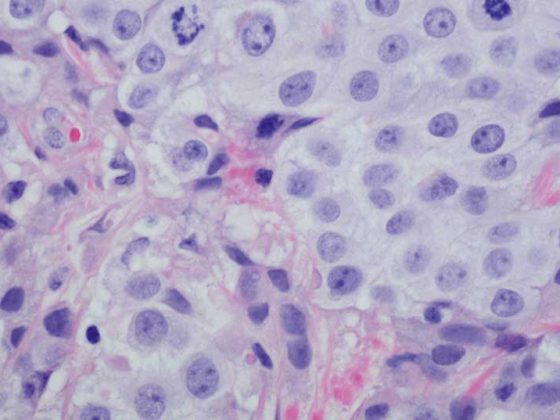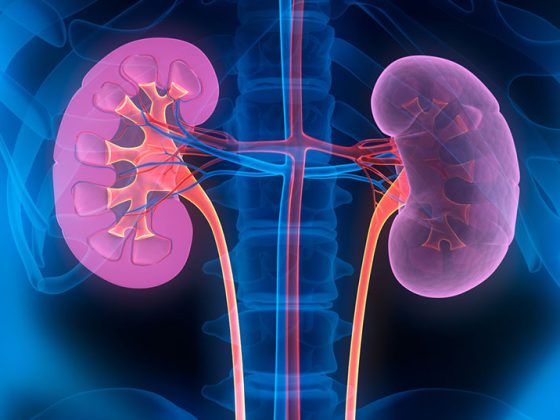Spinal muscular atrophy is associated with rapid loss of motor neurons, resulting in, among other things, impaired breathing. It represents the most common genetic cause of infant and young child mortality. As the first causal therapy option, the innovative antisense oligonucleotide was awarded the Prix Galien Suisse 2019.
Young patients with spinal muscular atrophy (SMA) lack the functional SMN1 gene. The consequence of this rare, autosomal recessive, progressive, neuromuscular disease is a rapid and irreversible loss of the motor neurons responsible for the muscle functions necessary for breathing, swallowing and basic movements [1,2]. Approximately one in 10,000 live births has this genetic defect. The severity of the disease depends on the expression of the paralogous gene SMN2. If left untreated, more than 90% of those with SMA type 1 die within the first two years of life [3].
Symptoms become noticeable in early-onset SMA in the first six months of life. Motor milestones such as lifting the head, sitting freely, standing or walking are subsequently absent. But there are also (rarer) cases in which the disease manifests itself later in childhood. In adolescence and adulthood, SMA shows slower progression, but still leads to progressive loss of motor function.
Disease modification leads to sustained improvements
SMA is divided into four subtypes based on age at symptom onset and maximum motor function achieved. These patients, previously treated only with supportive-palliative care, have been able to receive disease-modifying therapy since 2017. The antisense oligonucleotide nusinersen (Spinraza®) compensates for SMN protein deficiency by increasing the production of functional protein via the SMN2 gene, of which there are usually multiple copies, thereby improving motor neuron function [6].
In the meantime, it has been demonstrated in several clinical studies on almost 350 patients that a stabilization or improvement of the course of the disease can be achieved. In infantile SMA, studies have shown that the innovative therapy has resulted in the development of motor milestones, among others [4]. In an interim analysis, mild treatment effects were observed at a later onset of disease, which had not been previously observed in the natural history of the disease [5–7]. There was a significant improvement in the 6-minute walk test after 180 days and an improvement in lung function and upper extremity function after 300 days. The efficacy and safety profile have now been followed up over a six-year period [8].
Adults also benefit
Results of a cohort study now support the experience in adult patients with 5q-associated SMA [9]. According to the approval, sufferers received the nusinersen for a minimum of six months and were followed up for up to 14 months. The primary endpoint was change in the Hammersmith Functional Motor Scale Expanded (HFMSE) assessed at 6 (n=124), 10 (n=92), and 14 (n=57) months. Mean HFMSE scores were significantly increased compared with baseline in each group. Clinically meaningful improvements (≥3 point increase) in HFMSE score were observed in 28% of patients at 6 months, 35% at 10 months, and 40% at 14 months.
Early intervention for good development
The fact that treatment of SMA should begin as early as possible – ideally before symptoms occur – is supported by interim results of a follow-up study [4]. In 25 newborns with genetically confirmed SMA, eoiner Spinraza® therapy was started within the first six weeks of life before the first signs of disease appeared. A large proportion of these patients (15 patients) have only two SMN2 copies, which if left untreated would in all likelihood have resulted in a severe course (type 1). Under therapy, all study participants have survived so far and can sit without support. Almost 96% can walk with assistance, 88% without assistance. This corresponds to a largely normal, age-appropriate development. Because the SMA therapeutic represents a medical breakthrough and has closed a gap in care, it was awarded the Prix Galien Suisse 2019.
Literature:
- Anderton RS, Mastaglia FL: Expert Rev Neurother. 2015; 15: 895-908.
- http://rarediseases.org/rarediseases/spinal-muscular-atrophy (last accessed 24.06.2020)
- Verhaart IEC et al. Prevalence, incidence and carrier frequency of 5q-linked spinal muscular atrophy – a literature review. Orphanet J Rare Dis. 2017; 12(1): 124.
- De Vivo DC, Bertini E, Swoboda KJ et al. Nusinersen initiated in infants during the presymptomatic stage of spinal muscular atrophy: Interim efficacy and safety results from the phase 2 NURTURE study. Neuromuscul Disord. 2019; 29(11): 842-856.
- Mercuri E, Darras BT, Chiriboga CA, et al: Nusinersen versus Sham Control in Later-Onset Spinal Muscular Atrophy. N Engl J Med. 2018; 378(7): 625-635.
- Walter MJ, Wenninger S, Thiele S, et al. Safety and Treatment ffects of Nusinersen in Longstanding Adulty 5q-SMA Type 3 – A Prospective Observational Study. Journal of Neuromuscular Diseases 2019; (4):453-465.
- SPINRAZA® Technical Information, as of August 2019; www.swissmedicinfo.ch
- Darras BT, Chiriboga CA, Iannaccone ST et al. Longer-term Assessment of Nusinersen Treatment in Children With Later-onset Spinal Muscular Atrophy Who Enrolled in CS2/CS12: An Interim Analysis of the SHINE Study. 13th Congress of the European Paediatric Neurology Society; 17-21 September 2019; Athens, Greece.
- Hagenacker T, Wurster CD, Günther R, et al: Nusinersen in adults with 5q spinal muscular atrophy_ a non-interventional, multicentre, observational cohort study. Lancet Neurol 2020; 19: 317-325.
- Swoboda KJ, Kirschner J, Finkel RS, on behalf of the NURTURE Study Group: Nusinersen Effect in Infants Who Initiate Treatment in a Presymptomatic Stage of SMA: NURTURE Results. Presented at: Cure Spinal Muscular Atrophy (CSMA) 2020, Jun11th – Jun14th, 2020; Orlando, Florida, USA.
InFo NEUROLOGY & PSYCHIATRY 2020; 18(4): 42.
GP PRACTICE 2020; 15(7): 43











